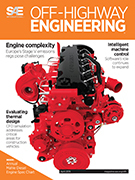Book

Diagnostic Communication with Road-Vehicles and Non-Road Mobile Machinery
2019-03-01
OBD, J1939 and UDS on CAN / IP), and a glimpse into the near future covering remote, cloud-based diagnostics and cybersecurity threats.






